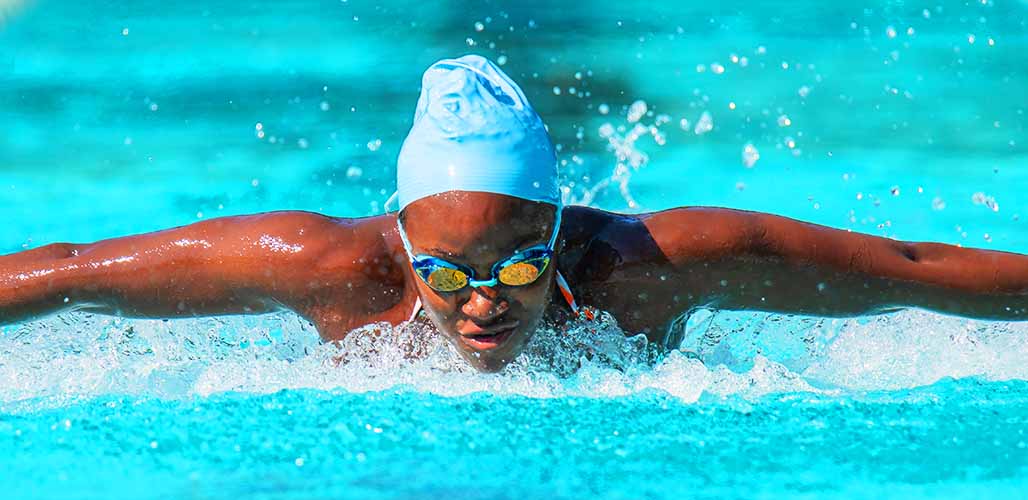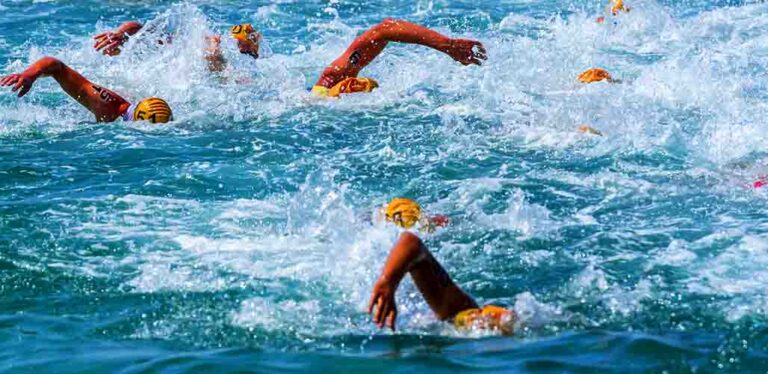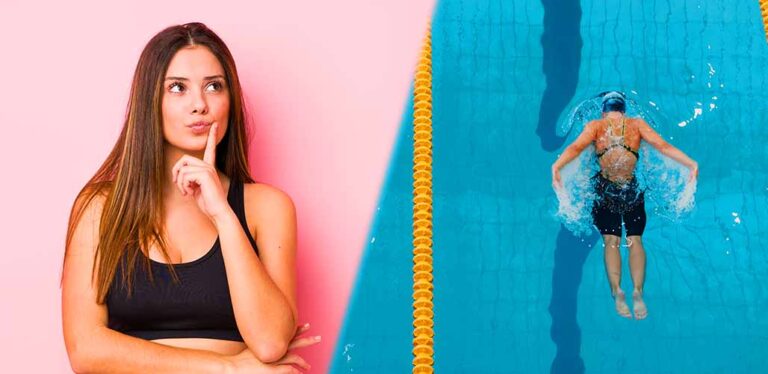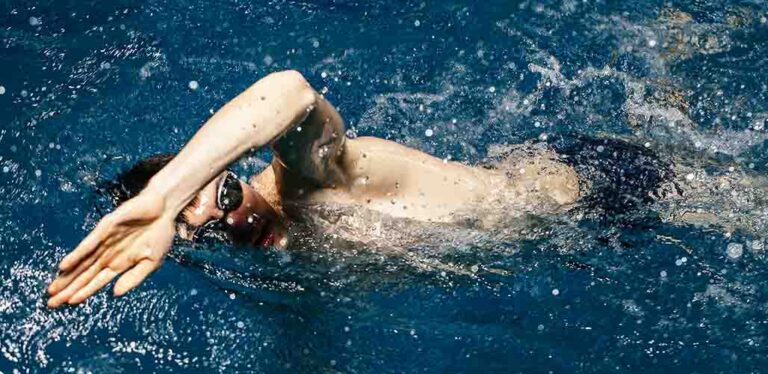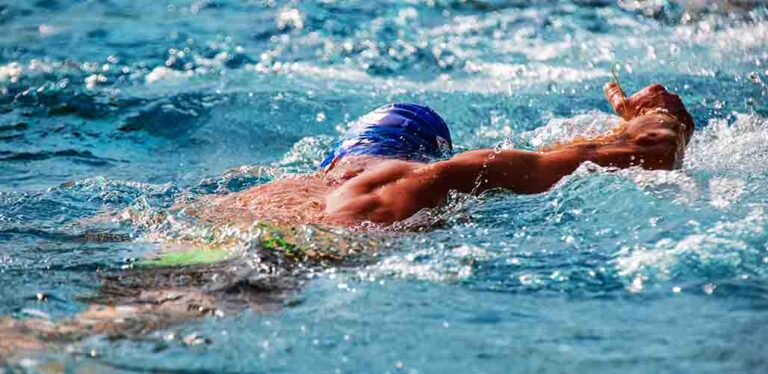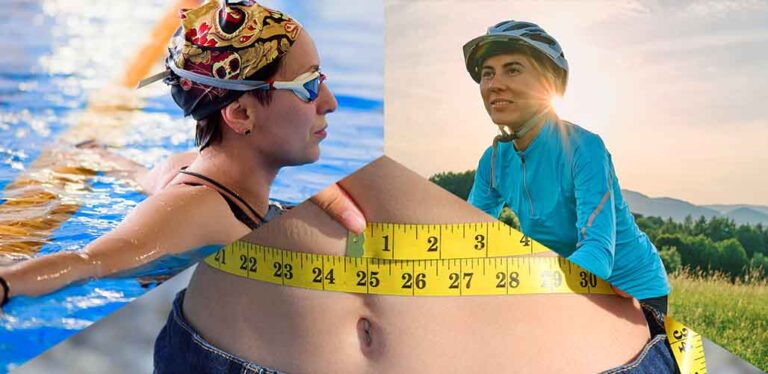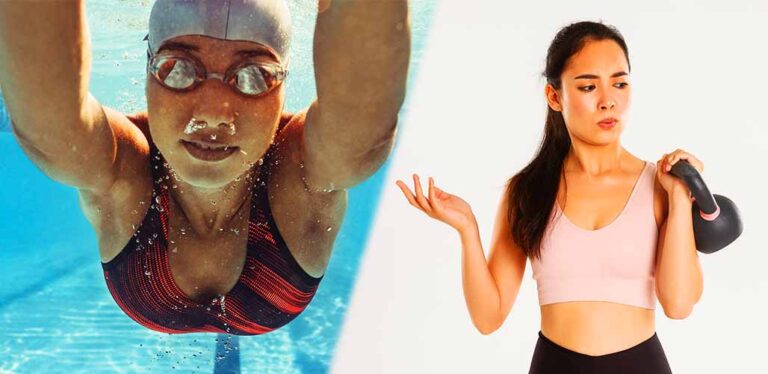What is the Least Tiring Swimming Stroke?
What is the least tiring swimming stroke? Swimming can be an intense aerobic exercise that engages most of your body and burns plenty of calories. But, since it uses so many of your muscles, you might struggle to swim for long periods without getting too tired. The speed you swim and the stroke you use can impact how much energy you expend whilst swimming. For many, breaststroke is the least tiring swimming stroke, but that doesn’t necessarily mean it’s the easiest!
- What is the least tiring swimming stroke?
- Which is the easiest swimming stroke?
- What is the most difficult swimming stroke?
- Which swimming stroke works the most muscles?
- How can I swim longer without getting tired?
Learning the least tiring swimming stroke can help you to extend your workouts and get the most from each session.
What is the Least Tiring Swimming Stroke?
Opinions differ when it comes to the least tiring swimming stroke. But, a lot of the answer will come down to how fast you’re swimming, and whether or not you’re using the correct technique.
A 2006 study found that freestyle, or front crawl, had the lowest total energy expenditure for competitive swimmers compared to breaststroke, backstroke, and butterfly. Front crawl is one of the fastest swimming strokes. But, many non-professional swimmers find front crawl to be quite tiring, and don’t choose it for relaxing swimming sessions, or long workouts.
Instead, a lot of people prefer breaststroke. Breaststroke is swam on your front, keeping your body as straight as possible. Your arms pull the water in a semi-circular motion and your legs kick out and back in a similar shape.
When swam properly, breaststroke involves gliding underwater. You resurface to take a breath whilst your arms are pulling. But, many people slow this stroke right down to a more relaxing pace that can be kept up for much longer. This often involves keeping their head above water constantly.
Least Tiring vs Easiest
When first starting out, many swimmers find that breaststroke and backstroke are the least tiring swimming strokes. Particularly because breaststroke can be slowed right down, and both styles can be done whilst keeping your head out of the water.
But, breaststroke is usually considered the least tiring in these instances because it is not swam with perfect form. For instance, by submerging the head and gliding underwater. Breaststroke is actually one of the harder strokes to learn, given the coordination it requires and the shapes you must make with your arms and legs. And, when done properly, it requires a lot of energy.
So, it’s worth also considering which swimming strokes are the easiest to learn and do if you’re only just starting out. Some of the easiest swimming strokes might provide you with a better workout, even if it ends up being shorter until you’ve built up your fitness levels.
Which is the Easiest Swimming Stroke?
The swimming stroke each person finds the easiest will vary. Some people prefer strokes like backstroke, that don’t require putting their head in the water. But, others find front crawl easiest, for its fast speed and natural movements. Choosing the easiest swimming stroke for you can depend on the part you find hardest. Do you struggle more with complex stroke movements, or is coordinating your limbs to do very different things the hardest? For some people, it’s timing their breaths that is the most difficult.
The amount of coordination required and the amount of energy needed for a swimming stroke can impact how easy it feels. Breaststroke requires a lot of coordination, to use your arms and legs at the right point, and to breathe when your head resurfaces. So, the following swimming strokes may be easier.
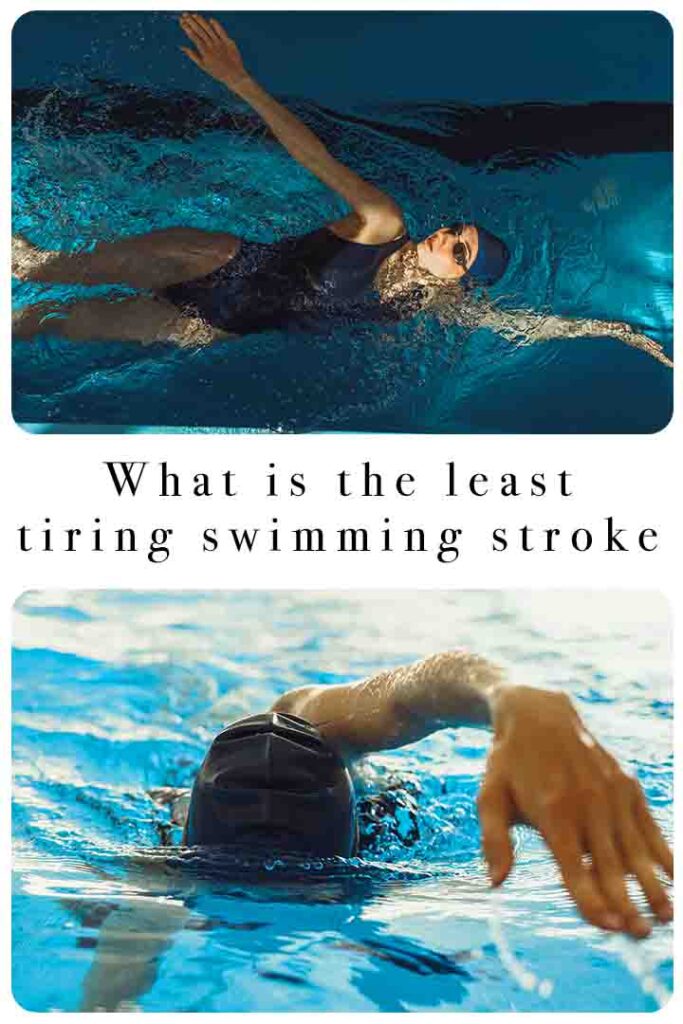
Backstroke
To swim backstroke, you will need to lie on your back in the water – as the name of this stroke suggests! Your arms move in a circular windmill motion, sweeping backwards past the sides of your head and back up past your sides to propel you through the water. Your legs will be straight and kicking.
Whilst backstroke is considered an easy, natural stroke by many, some won’t favor it since it’s harder to see where you’re going. So, it can be harder to anticipate the end of the pool before you get there. But, breathing during backstroke can be easier than many other strokes, since your face is always out of the water.
Front Crawl or Freestyle
Freestyle is a similar stroke to backstroke. But, instead of lying on your back, you’ll be on your front. Your arms will move in circular motions in the opposite direction to backstroke. Whilst one arm is coming up past your ear, the other is pulling through the water. Your legs will be held straight in a constant flutter kick.
Freestyle is one of the fastest swimming strokes, and can feel quite tiring despite the ease of the movements required. Timing your breathing correctly is the hardest part of the freestyle stroke. Whilst swimming, your face is submerged in the water. But, you inhale a breath by turning your head to the side as your arm scoops through the air, and release that breath underwater.
Sidestroke
Sidestroke is a less common swimming stroke than freestyle and backstroke, despite its similarities. This could be because it’s not seen in competitive swimming. As the name of this stroke suggests, it is done whilst laying on your side. Your legs move in a scissor kick.
The arm movement seems a little complicated at first, but will often feel easy once you get the hang of it. Your leading arm will start straight by your ear, and the other one will trail at your side. The lead arm sweeps down to pull you through the water, whilst your other arm comes up to meet it. Then your arms go back to their starting position, allowing your non-leading arm to continue the push through the water. If you were standing, this movement might feel like taking something from a shelf above your head, passing it to your other hand and pushing it to the floor.
The techniques and coordination of this stroke can be hard to navigate at first. But, your head will not submerge underwater. So, you can breathe easily with one less thing to think about as you’re swimming.
What is the Most Difficult Stroke in Swimming
Most people consider the butterfly stroke to be the hardest. This is because it takes a lot of energy, more so than the other strokes we’ve looked at so far. But also because it requires a lot of coordination and breathing control. Like many swimming strokes, butterfly uses a lot of major muscles, but it is also faster and more vigorous than most other strokes.
Your legs move together in a dolphin kick during butterfly. And your arms move symmetrically, sweeping up through the air past your ears and scooping down into the water to pull you forwards. You kick twice for each scoop of your arms.
Breathing recommendations vary for this stroke. Some coaches may recommend breathing every stroke, but others may say every other stroke. Either way, it can take a while to get used to taking a quick breath whilst your arms are out of the water during such a fast-paced stroke.
Which Swimming Stroke Works the Most Muscles?
Most swimming strokes use a lot of muscles throughout your body. This is because your arms will work to pull you through the water whilst your legs will be kicking. Your core stays engaged as you pull yourself out of the water to breathe, or as you keep yourself at the surface of the pool.
Though all swimming strokes will use a large amount of muscles, they don’t all prioritise the same muscle groups. Strokes with more reliance on arm movements, like the butterfly, will engage shoulder, arm and back muscles more than those that emphasise force generated by the lower body, like breaststroke.
How Can I Swim for Longer Without Getting Tired?
Swimming is an intense workout because it engages so many muscle groups. So, it’s natural to feel tired whilst swimming. And, if you’re new to the sport, this can happen surprisingly quickly. But, there are a few steps you can take to extend your workouts.
Firstly, make sure you’re properly hydrated before swimming. Fatigue is a major symptom of dehydration, and it can be easy to forget to drink when your workout is in water. It can also help to eat something before swimming. Have a small, energy rich snack around 30 to 40 minutes before swimming. If you’re eating a larger meal, do so a couple of hours before swimming.
Make sure you’re getting appropriate rest times between swimming workouts. Improper rest can lead to poorer performance and higher levels of fatigue when you next get into the pool. But also, stick with it! The more you swim, the fitter you will become and the easier it will be to extend your time in the pool. The same is true of certain strokes. You might struggle to swim front crawl for long at first, but with consistent training, it will be much easier to extend your workouts.
What is the Least Tiring Swimming Stroke?
The least tiring swimming stroke is partly down to your personal opinion. For some people, breaststroke is the least tiring stroke. But, for many people, the coordination and stroke shapes breaststroke requires is mentally taxing. So, something like backstroke or freestyle may be easier.
Which swimming stroke do you find the least tiring?
Learn More About Swimming Strokes and Styles
- Unique swimming strokes
- Why am I so tired after swimming?
- Does swimming get boring?
- Judging a safe depth of water to jump into
- Are you a fast swimmer?
References and Resources
- Barbosa, T. (et al), ‘Evaluation of the Energy Expenditure in Competitive Swimming Strokes’, International Journal of Sports Medicine (2006)
- ‘Calories Burnt in 30 Minutes for People of Three Different Weights’, Harvard Health Publishing (2021)
- Bharam, P. & Kocharekar, A. ‘Assessment of Knowledge and Hydration Awareness Among Swimmers’, Indian Journal of Physical Education, Sports and Applied Sciences (2022)
- Daley, A. & Welch, A. ‘The Effects of 15 Min and 30 Min of Exercise on Affective Responses Both During and After Exercise’, Journal of Sports Science (2004)
- Bonci, L. ‘Eating for Performance: Bringing Science to the Training Table’, Clinics in Sports Medicine (2011)

